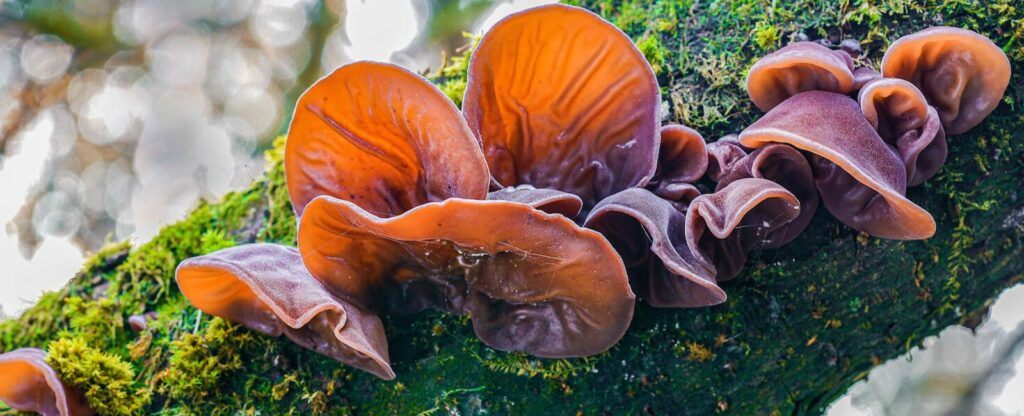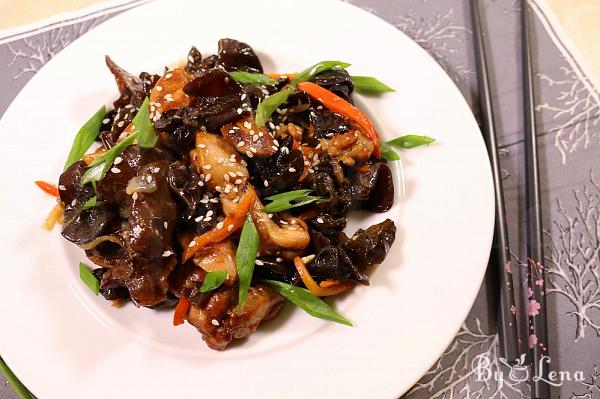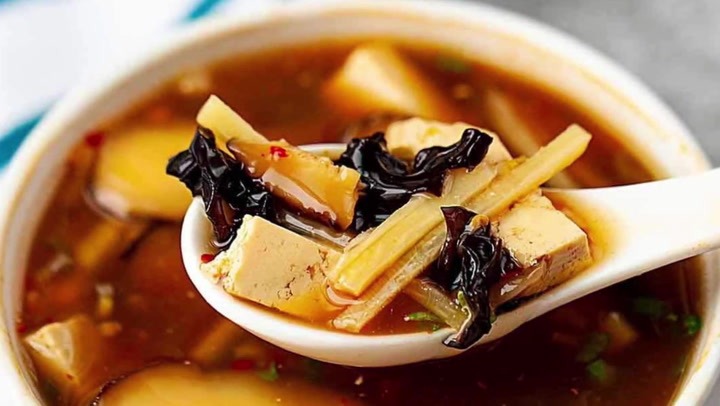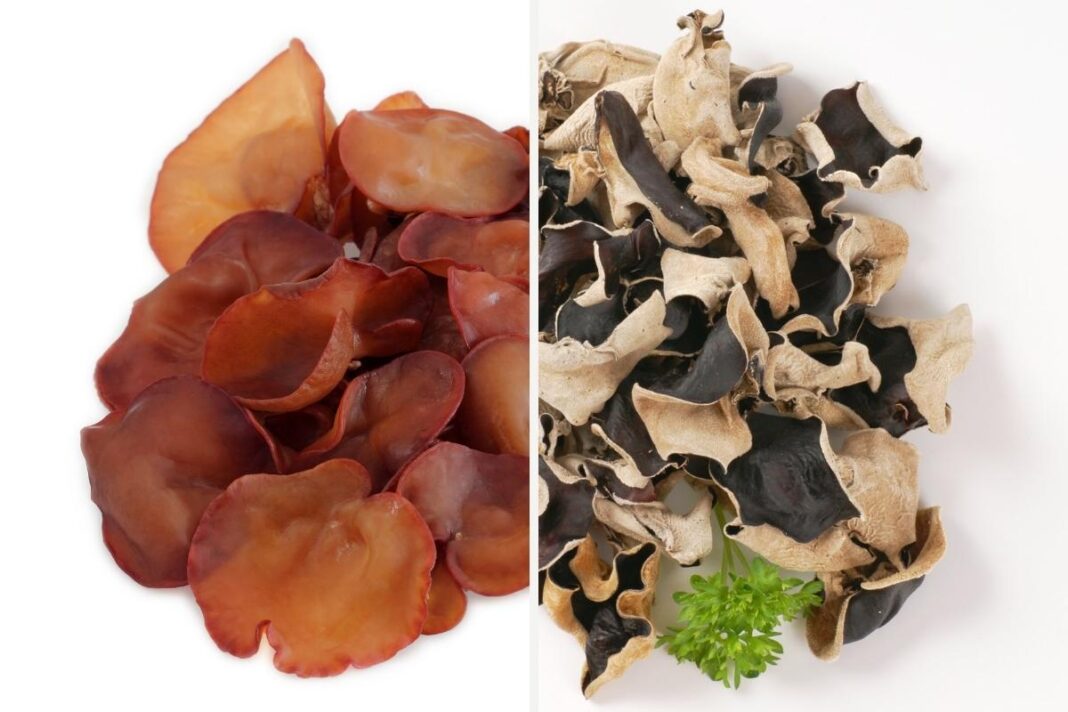Wood ear mushrooms, also known as Auricularia auricula-judae, are a fascinating type of fungi renowned for their culinary and medicinal uses. Often referred to as black fungus, tree ear, or cloud ear, these mushrooms are a staple in various Asian cuisines and traditional medicine. In this article, we’ll delve into the origin, benefits, uses, and much more about the wood ear mushroom.
Origin of Wood Ear Mushroom
The wood ear mushroom has a rich history dating back thousands of years. Native to Asia, these mushrooms were first discovered in China and later spread to other parts of the world. Historically, they were used in traditional Chinese medicine for their purported health benefits, such as improving circulation and reducing inflammation.
What Are Wood Ear Mushrooms?
Wood ear mushrooms are a type of jelly fungus that grows on decaying wood, especially elder trees. They have a distinct appearance, with a dark, ear-like shape and a gelatinous texture. These mushrooms are known for their chewy consistency and ability to absorb flavors, making them a popular ingredient in soups and stir-fries.

Alternate Names for Wood Ear Mushrooms
Wood ear mushrooms are known by several names:
- Common Names: Black fungus, tree ear, cloud ear
- Scientific Names: Auricularia auricula-judae, Auricularia polytricha
Pros of Wood Ear Mushrooms
Wood ear mushrooms offer numerous health and culinary benefits:
- Health Benefits: Rich in fiber, antioxidants, and essential nutrients, they are believed to boost immune health, improve digestion, and support cardiovascular health.
- Culinary Advantages: Their unique texture adds a delightful chewiness to dishes, and their mild flavor makes them versatile in various recipes.
Cons of Wood Ear Mushrooms
Despite their benefits, wood ear mushrooms have some potential drawbacks:
- Potential Health Risks: Some people may experience allergic reactions or digestive issues when consuming wood ear mushrooms.
- Culinary Drawbacks: If not cooked properly, they can be tough and unappetizing.
Uses of Wood Ear Mushrooms
Wood ear mushrooms are used in both culinary and medicinal contexts:
- Culinary Uses: Commonly added to soups, salads, stir-fries, and even desserts for their texture and ability to absorb flavors.
- Medicinal Uses: Traditionally used to treat various ailments, including colds, sore throats, and digestive issues.

What Does It Taste Like?
The wood ear mushroom has a mild, earthy flavor with a slightly crunchy and gelatinous texture. While it doesn’t have a strong taste, it absorbs the flavors of the ingredients it is cooked with, making it a versatile addition to many dishes.
Nutritional Value of Wood Ear Mushrooms
Wood ear mushrooms are low in calories but packed with nutrients:
- Vitamins and Minerals: High in vitamin B2, vitamin D, iron, and potassium.
- Caloric Content: Approximately 25 calories per 100 grams, making them a healthy addition to any diet.
How to Cook Wood Ear Mushrooms
Cooking wood ear mushrooms is quite straightforward, and with the right steps, you can enhance their unique texture and mild flavor. Here’s a detailed guide to help you prepare them:
Rehydrating Dried Wood Ear Mushrooms:
Soak: Place the dried wood ear mushrooms in a bowl and cover them with warm water. Allow them to soak for about 30 minutes or until they become soft and plump.
Rinse: Once rehydrated, drain the water and rinse the mushrooms thoroughly to remove any dirt or impurities.
Trim: Inspect the mushrooms and trim off any tough or woody parts, especially around the base.
Basic Cooking Methods:
Stir-Frying: Heat a tablespoon of oil in a wok or large skillet over medium-high heat. Add the rehydrated wood ear mushrooms and stir-fry for about 3-5 minutes until they are tender. You can add garlic, ginger, and other vegetables or proteins to enhance the dish.
Boiling: Bring a pot of water to a boil, then add the rehydrated mushrooms. Boil for 2-3 minutes, then drain. This method is useful for adding mushrooms to soups or broths.
Sautéing: Heat a pan with a bit of oil over medium heat. Add the wood ear mushrooms and sauté for 5-7 minutes until they are cooked through. Season with salt, pepper, and your favorite herbs or spices.
Enhancing Flavor:
Marinades: Marinate the rehydrated mushrooms in a mixture of soy sauce, sesame oil, garlic, and a bit of sugar for at least 15 minutes before cooking to infuse them with flavor.
Sauces: Wood ear mushrooms pair well with savory sauces like oyster sauce, hoisin sauce, or a simple soy sauce and vinegar mix.
Tips for Best Results:
Don’t Overcook: Wood ear mushrooms can become too soft and lose their pleasant texture if overcooked. Keep an eye on them and cook just until tender.
Combine Textures: Pair wood ear mushrooms with other ingredients that have different textures, such as crunchy vegetables or tender meats, to create a balanced dish.
Wood Ear Mushroom Recipes
Here are some delicious recipes to try with wood ear mushrooms:
Wood Ear Mushroom and Tofu Stir-Fry:
Ingredients:
1 cup rehydrated wood ear mushrooms
1 block of firm tofu, cubed
2 cloves garlic, minced
1-inch piece ginger, minced
1 bell pepper, sliced
2 tablespoons soy sauce
1 tablespoon oyster sauce
1 teaspoon sesame oil
2 green onions, chopped

Instructions:
Heat oil in a wok over medium-high heat. Add garlic and ginger, and sauté until fragrant.
Incorporate the tofu cubes and stir-fry until golden brown.
Add the wood ear mushrooms and bell pepper, and stir-fry for another 3-5 minutes.
Stir in the soy sauce, oyster sauce, and sesame oil, and cook for an additional 2 minutes.
Garnish with chopped green onions and serve hot with steamed rice.
Hot and Sour Soup with Wood Ear Mushrooms:
Ingredients:
1 cup rehydrated wood ear mushrooms, sliced
4 cups chicken or vegetable broth
1 block tofu, cubed
3 tablespoons soy sauce
1 carrot, julienned
2 cloves garlic, minced
1 tablespoon ginger, minced
1/4 cup rice vinegar
1 teaspoon white pepper
2 eggs, lightly beaten
2 green onions, chopped

Instructions:
In a large pot, bring the broth to a boil. Add the garlic, ginger, and carrots, and simmer for 5 minutes.
Add the wood ear mushrooms and tofu, and cook for another 5 minutes.
Stir in the rice vinegar, soy sauce, and white pepper.
Slowly pour in the beaten eggs while stirring the soup to create egg ribbons.
Garnish with chopped green onions and serve hot.
Wood Ear Mushroom Salad with Sesame Dressing:
Ingredients:
1 cucumber, julienned
1 carrot, julienned
Thinly sliced 1 cup rehydrated wood ear mushrooms
1 tablespoon soy sauce
1 tablespoon rice vinegar
2 tablespoons sesame oil
1 teaspoon sugar
1 teaspoon sesame seeds
Instructions:
In a large bowl, combine the wood ear mushrooms, cucumber, and carrot.
In a small bowl, whisk together the sesame oil, soy sauce, rice vinegar, and sugar until well combined.
Pour the dressing over the salad and toss to coat.
Sprinkle with sesame seeds and serve chilled.
These recipes showcase the versatility of wood ear mushrooms and highlight their unique texture and mild flavor. Enjoy experimenting with these dishes and incorporating wood ear mushrooms into your culinary creations!

How to Store Wood Ear Mushrooms
Proper storage ensures they remain fresh and flavorful:
- Fresh Storage: Keep fresh wood ear mushrooms in a paper bag in the refrigerator for up to a week.
- Dried Storage: Store dried mushrooms in an airtight container in a cool, dark place for up to a year.
Precautions for Use
When consuming wood ear mushrooms, consider the following precautions:
- Allergic Reactions: Some individuals may be allergic to wood ear mushrooms, so it’s best to try a small amount first.
- Safe Consumption Tips: Always cook thoroughly to avoid any potential digestive issues.
The Bottom Line
Wood ear mushrooms are a versatile and nutritious ingredient that can enhance the flavor and texture of various dishes. While they offer numerous health benefits being aware of potential risks and proper cooking methods is essential. Whether adding them to a traditional Asian recipe or experimenting with modern dishes, wood ear mushrooms are a valuable addition to your culinary repertoire.
